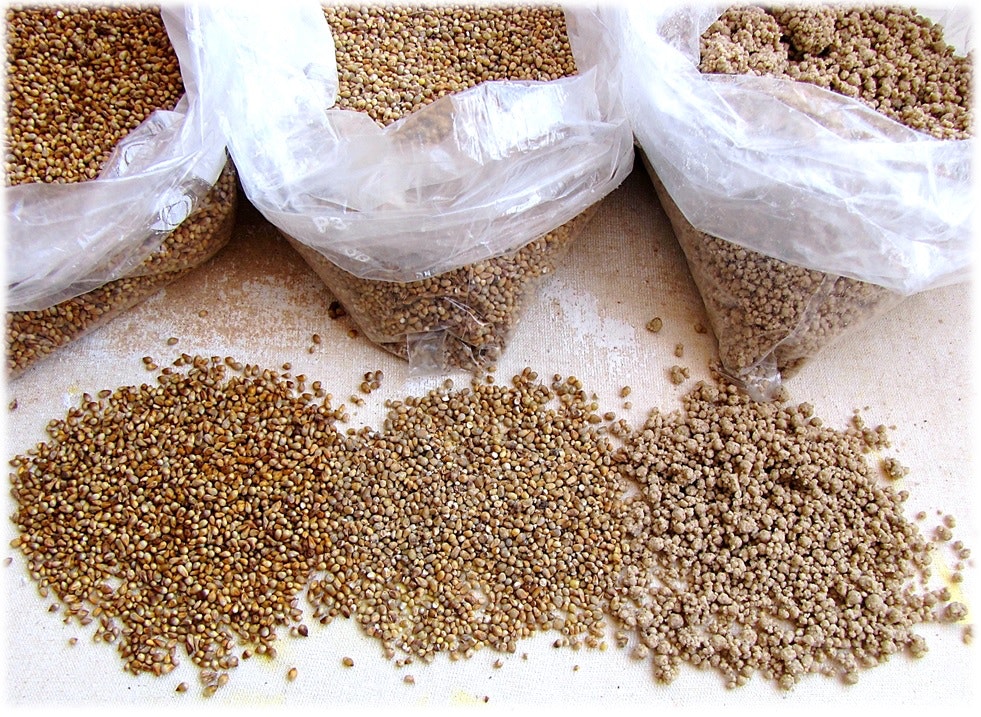As the weather begins to turn each time this year, I can’t help but think of millets. Typically associated with the cooler months, millets are a serendipitous solution to the global concerns of climate change, air pollution and malnutrition. In a world dominated by the likes of wheat, rice and corn, millets play an increasingly important role for the palate and the planet.
Millets Are The Future
“Grow, nourish, sustain. Together. Our actions are our future.” This was the theme of World Food Day 2020, which is celebrated on 16th October every year. Climate change has adversely affected all the three aspects of food security: availability, access and absorption. The food that makes its way to our plate is part of a complex system that entails agricultural practices, animal husbandry, food production, processing, distribution, supply and marketing. The system also involves how we prepare, consume and store our foods.
As the global population continues to grow rapidly, and the temperature of the earth only rises, farmers struggle to grow enough food.
To add to the problem, our contemporary diets have become increasingly unsustainable. Much of the food production is now energy-intensive, which negatively impacts the health of the planet.
Moving Towards A Sustainable Diet
Is there anything that we can do on our part to mitigate these challenges? Adopting a sustainable diet seems to be the answer.
Sustainable diets are “those diets with low environmental impacts that contribute to food and nutrition security and to healthy life for present and future generations. Sustainable diets are protective and respectful of biodiversity and ecosystems, culturally acceptable, accessible, economically fair and affordable, nutritionally adequate, safe, and healthy, while optimizing natural and human resources.” (Food and Agriculture Organization of the United Nations).
Adopting a sustainable diet is obviously a tall order, but at this point, it is the only way forward.
A Case for Diet Diversity
An important aspect of adopting a sustainable diet is to focus on the cause of nourishment.
The lack of diet diversity has been cited as a major cause for poor nutrition. Nutrition experts repeatedly stress on the need for alternate grains and to give up the dependency on wheat, rice and corn for feeding the world, today and in the future.
The Nutritional Value of Millets
The unique nutritional character of millets is worthy of reams, but let me put it in a nutshell for now. Millets are a natural source of iron, zinc, calcium and B-complex vitamins. Rich in antioxidants and immune modulators such as polyphenols, lignans, phytosterols, phyto-oestrogens and phytocyanins, millets possess various medicinal properties. The complex carbohydrates and dietary fibre in millets serve as nutritional solutions to many chronic lifestyle diseases.
It’s a common misconception that millets are a single variety of grain. There are actually more than 500 varieties of millets! Some common varieties are pearl millet (bajra), sorghum (jowar), finger millet (ragi), kodo millet, barnyard millet, little millet, proso millet and foxtail millet. Many of these millets are also known by their region-specific local names.
Make Way For The Super Crop
When it comes to identifying a ‘super’ crop, millets check all the boxes. The crop is greatly resistant to the adversities of drought and salinity (they grow on dry, arid land and in harsh, hot climate), while serving as an excellent option to meet nutrient security.
Compared to water-intensive crops like rice and sugarcane, millets are especially drought-smart. They require relatively low rainfall. The crop’s deep roots can effectively draw upon nutrients buried in the soil, making it one of the most resilient crops known to humans.
Millets are also a very effective solution to the air pollution problem that engulfs northern Indian every year at this time. More on that in this article.
Commonly Asked Questions About Millets
Despite the increased awareness about the superior nutritive worth of millets, there are many questions that prevail. Let me address some of them in the hope to garner better acceptance of this crop.
- Can millets be eaten through the year, particularly in the summer months?Yes, millets can be eaten through the year, in the winter and in the summer. There is no scientific basis for not consuming them in the warmer months.
- How can millets be incorporated into meals, other than for making rotis?Millets can be used to prepare dosa, idli, cheela, khichri, porridge and even baked goods such as cookies, cakes, brownies and risotto.
- What’s the best place to buy millets for everyday consumption?You could shop for millets at farmer’s markets until the market fully opens up to them and they become a mainstream grain.
- Why did millets go out of fashion?Unfortunately, millets were labelled as the poor man’s food in order to promote more lucrative crops like wheat and corn. They also require post-harvest labour intensive processes like threshing and dehulling, making them comparatively unpopular among farmers.
- What if I don’t like the taste of millets?To get accustomed to the taste, you could substitute a small portion of the grain that you are already eating (like wheat) with the variety of millet (like ragi, jowar, etc.) that you wish to incorporate in your diet. Gradually increase the portion size until you grow to like the taste.
Bringing Millets To The Table
Apart from what the government is doing to bring millets back to the table, many other initiatives are underway. For example, health food companies are creating school programmes to engage children in the initiatives. The involvement of children has always been effective in terms of bringing about change, particularly in the case of campaigns against firecrackers, air pollution and climate change. A range of extracurricular activities, such as storytelling or cooking competitions, can be organised in schools to serve as a part of the millet revival plan.
At a more niche level, celebrity chefs and food bloggers are whipping up recipes using millets, while microbreweries in Bengaluru and Pune are serving drinks prepared with millets.

Ms. Neelanjana Singh


